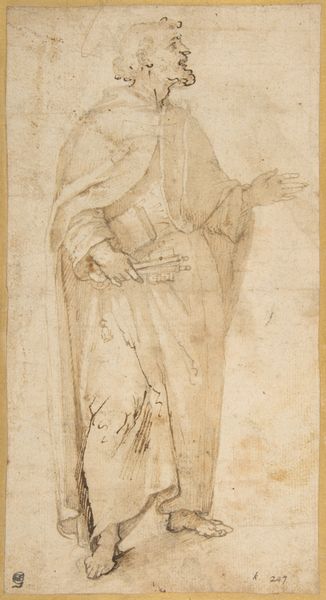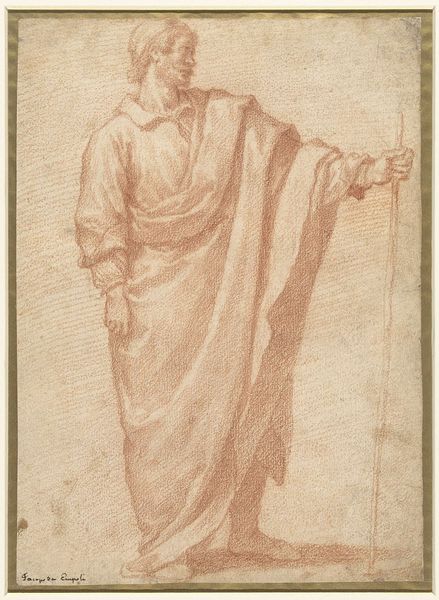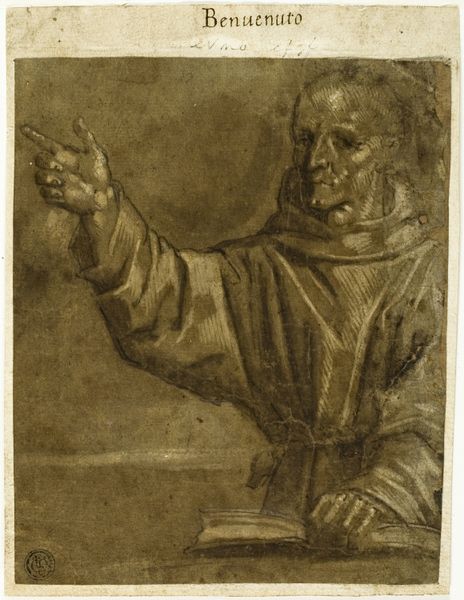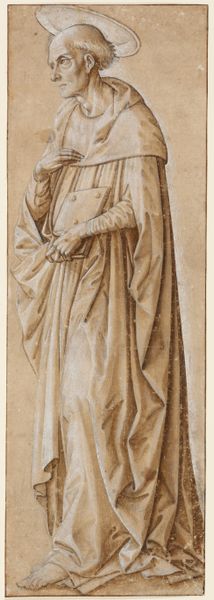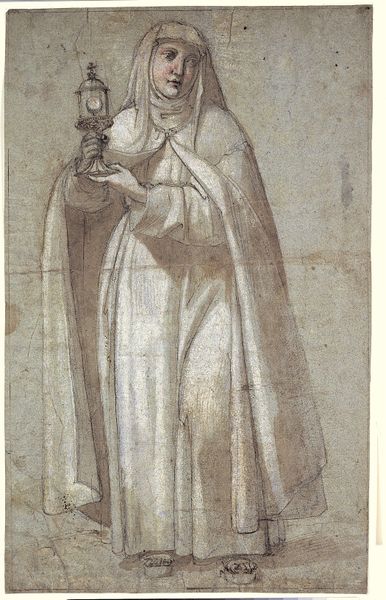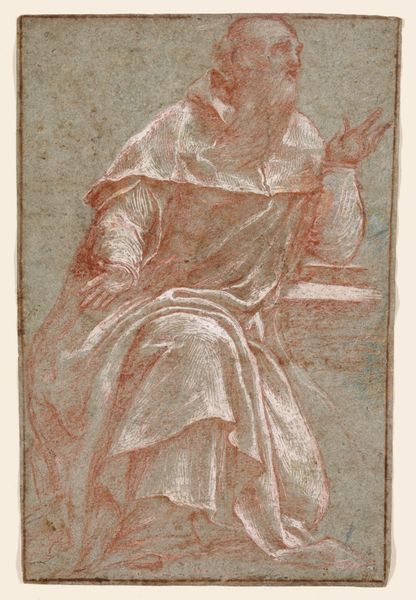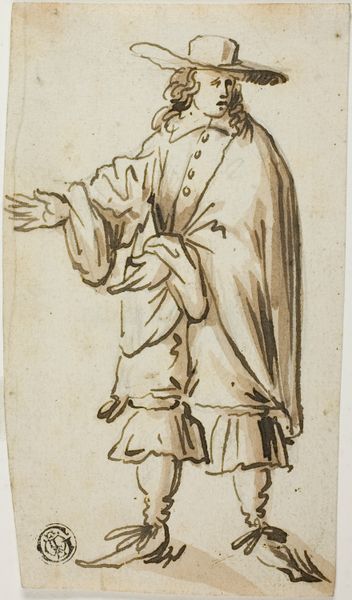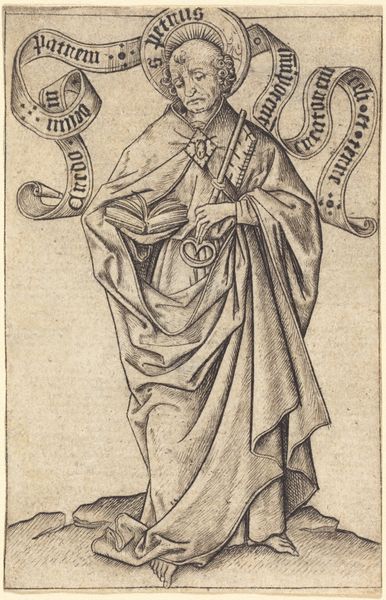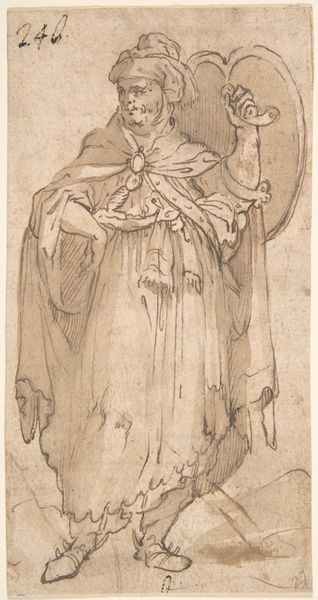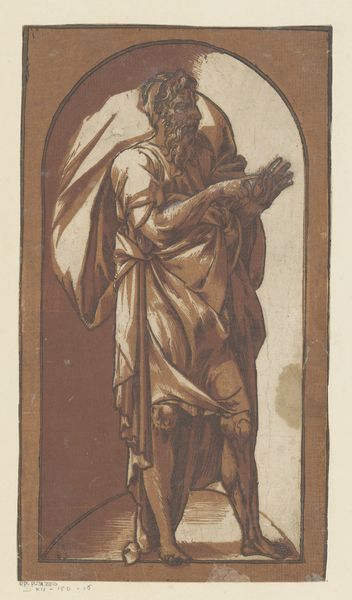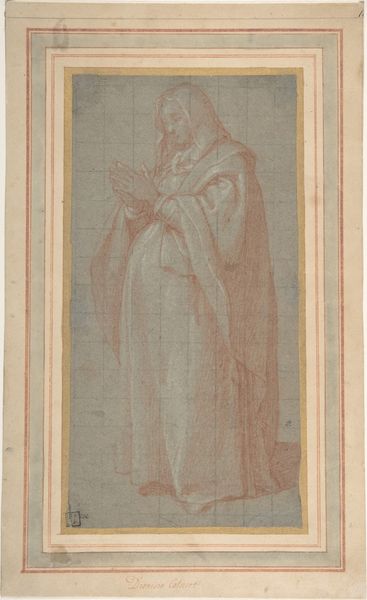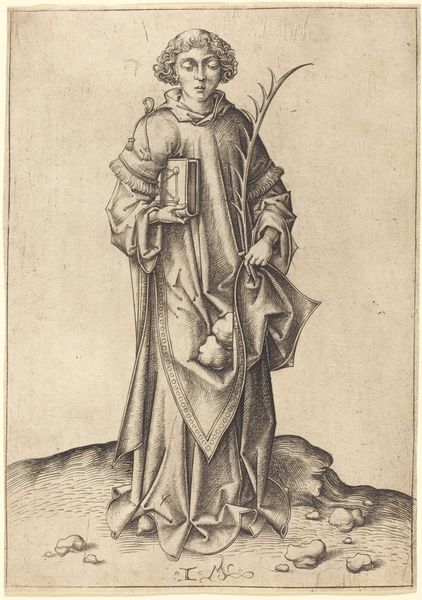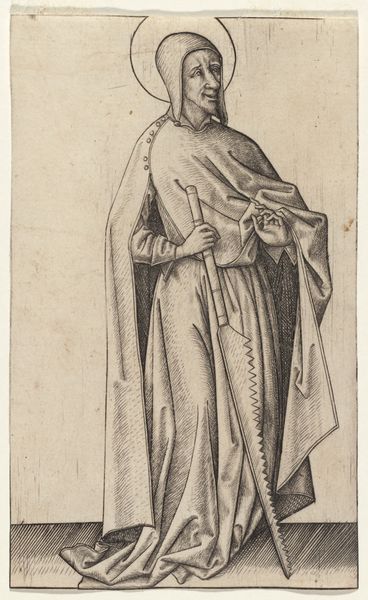
drawing, print, ink
#
portrait
#
drawing
#
baroque
# print
#
charcoal drawing
#
figuration
#
ink
Dimensions: 7-3/16 x 3 in. (18.3 x 7.6 cm)
Copyright: Public Domain
Curator: This intriguing drawing, attributed to an anonymous artist, dates back to sometime between 1650 and 1700. It is titled "Standing Franciscan Saint in a Niche" and is currently held in the collection of the Metropolitan Museum of Art. It seems to be rendered in ink and charcoal. What are your initial thoughts? Editor: My eye is immediately drawn to the limited, earthy palette, it really reinforces a feeling of humility and almost austerity, and also notice the composition and pose with a clear emphasis on verticality, almost elongated. It reminds me a bit of El Greco. Curator: It’s interesting you mention austerity, as the Franciscan order itself was founded on principles of poverty and simplicity. This portrayal likely aimed to reinforce those values to a public audience and members of the Church alike. Also the Church invested heavily in artworks that would remind ordinary people of those stories. Editor: True, but what is compelling to me, going back to formal elements, is the combination of very smooth flowing brush strokes, like in the drapery, contrasting against the much more agitated marks of the Saint's face. I cannot quite grasp why an artist would insist on obscuring a sacred face, unless this choice underscores humanity over divine grandeur. Curator: I think it would be crucial to dig deeper and know more of its provenance; it could very well be that it was a preparatory study, and the face details were not considered too important. But even this speculation opens another dimension: a more intimate approach to sacred icons. Editor: I agree. The drawing embodies certain baroque aesthetics without the overt theatricality found in many history paintings from that era. The contrast between the shell in the background with rays emerging from behind it versus the brown shade also amplifies the mysterious tone. Curator: And we also see how the Baroque employed such figures in propaganda, as it tried to revitalize the role of Catholicism throughout Europe. It brings us back to the social context and why that style became so prevalent during those times. It served purposes that were spiritual and more profoundly political. Editor: Yes, now I see it too. The whole ensemble does bring out interesting interplay, like the saint's internal piety versus his assigned public role. Well, it seems even with incomplete faces, art manages to speak volumes. Curator: Precisely, there's so much this artwork suggests regarding spirituality, the institution of the Church, artistic styles of the time, and the place of art in it all.
Comments
No comments
Be the first to comment and join the conversation on the ultimate creative platform.
